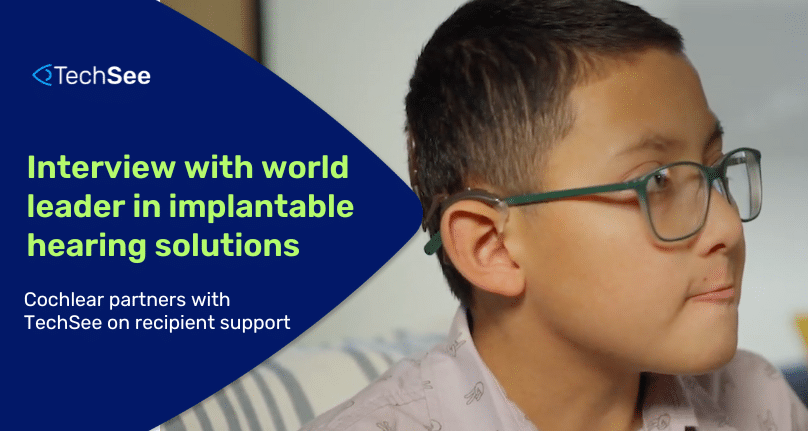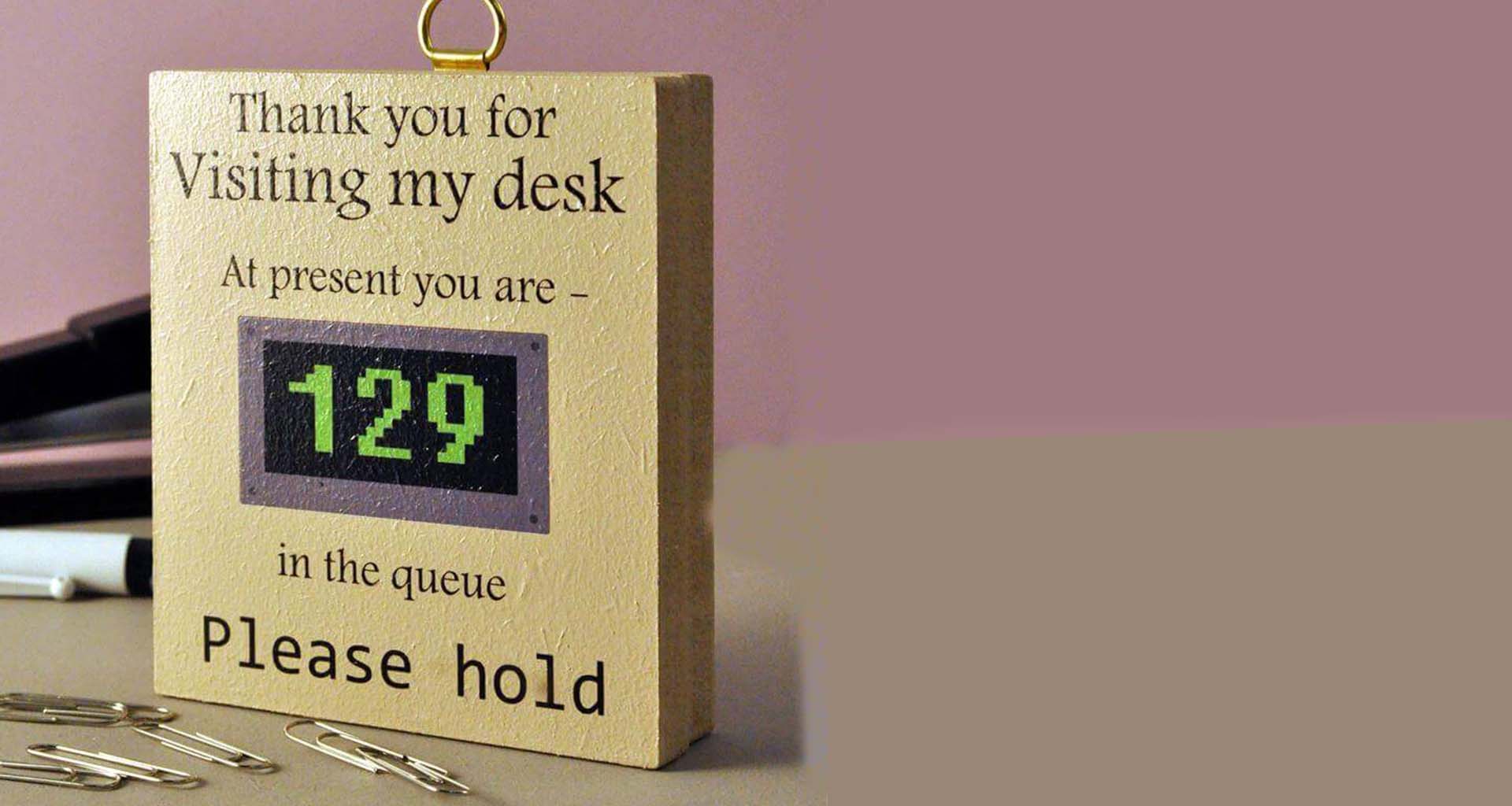Cochlear is the world leader in implantable hearing solutions. With over 700,000 devices implanted worldwide, the company’s customer service team assists people daily with a wide range of questions about their devices, including multiple types of implants, Sound Processors, and a portfolio of accessories. These devices are used by people of all ages, they serve kids, grandparents and connect them to the world around them through the miracle of hearing. Cochlear is also known for the quality of their medical device support. Their virtual assist technologies are often acknowledged by customers.
We sat down with Myra Arriaga, one of Cochlear’s device support specialists, to discuss her passion for ensuring her recipients have consistent access to hearing as well as with Adriana Rodriguez and her son Noel, a bilateral Cochlear recipient. We wanted to learn more about how visual assistance technology improves the Cochlear recipient support experience.
Being a device support specialist

Myra, what does being a Cochlear device support specialist mean for you?
Device support for me is making sure our recipients feel supported and we’re here for them to ensure their equipment is properly working. I feel particularly connected to this mission on longer calls – as helping the recipient feel comfortable is essential then. We get about 60 calls a day, on average these take about 7.5 minutes. If it is a call that involves complex troubleshooting, which is about 10% of our calls, then those calls can take up to an hour, even 75 minutes, in some cases.
Cochlear device support also means being very accurate, because we are treating our recipients and their hearing. They are calling us either because they are not hearing with their device or are having sound issues. Obviously, it is important that they are able to hear to be able to live their day-to-day lives. It’s very rewarding to hear them get very happy, to see a child jumping or a grandmother in tears for being so excited about fixing their device and being back in sound.
What are some main challenges of virtual device support for something as complex as a medical implant?
Troubleshooting and diagnosing remotely are some of the main challenges in device support because we are not able to see the sound processor our recipients are having issues with, and they may not always know the names of the parts. It is critical that I understand the part that is causing the issue and visually guide customers at every step until we reach resolution, and the recipient is back in sound.
Virtual support technologies
On a practical level, how does virtual support technologies improve these calls?
Virtual support technologies make my job 100 times better! TechSee’s visual assistance is a game changer because it helps me be more efficient and more accurate in my troubleshooting. A call that might take 75 minutes is typically reduced to 30 minutes or less when I can see what is happening and understand what the customer is experiencing. Also, in times when we need to know which part is faulty and may need replacing, the ability to see makes a huge difference. Where we might think we need to replace a sound processor, which is an expensive item, once using TechSee we may determine it’s just a faulty coil cable, a much lower cost item to replace. This can save us thousands of dollars of costs that wouldn’t even solve the issue! I just want to add here that I would definitely recommend TechSee to any support organization!
In your experience, how is visual assistance different from video conferencing applications?
Video conferencing tools don’t have the capabilities that TechSee has. TechSee’s visual assistance helps us see and interact with our recipients in their environment. This is particularly helpful for medical device support. For example, when a customer points their camera at a sound processor, I can put a circle around the part that I’m referring to and they immediately get what I mean. Visual assistance is almost like a physical interaction. The physical demonstration leaves little room for doubt or ambiguity.
Choosing Cochlear

Adriana, can you tell us about your son Noel and his journey?
Noel is ten years old. At the age of 9 months, he began losing his hearing. Finding out that your child doesn’t hear is extremely difficult. Noel had his first Cochlear implant in his left ear at the age of 2, and after seeing his progress, we decided to implant his right ear five years later. It was a truly life-changing experience for us! My son’s happiness is the most important for me. And that’s why trusting Cochlear was a big decision that I’m really pleased with.
What is getting support from Cochlear like when there is an issue?
Every interaction we’ve had with Cochlear has been great. Anytime I need their support, I know I will be taken care of, my questions will be answered, and I am in good hands with Cochlear.
How has your experience been receiving support visually?
I connected with Cochlear and through my phone’s camera, without even downloading an app, I showed the issue, they understood, and I got instant guidance and the problem was fixed instantly. I loved TechSee’s visual support technology. Having the ability to just point my camera at the Cochlears saved me from having to explain what was going on and understanding what part they are referring to. This way I got it accurately on the first go. Cochlear has made a great decision to add TechSee as an asset. I trust Cochlear and TechSee is a big part of that.
In short
Thank you both for your time today. Myra, can you summarize why you recommend TechSee’s visual assistance?
Medical device support is particularly tricky and TechSee has been a game changer for us. TechSee makes my support calls shorter, more precise, and more recipient friendly. Our recipients’ hearing is important to us and them. They really appreciate when we can help them quickly and resolve their questions or issues accurately. Visual assistance also frees up our time allowing me to help more customers as well each day. With TechSee, I can provide a solution in a 10-minute visual session rather than a 30-minute audio call, so it’s a win-win.
To see how TechSee’s visual assistance can help your organization, contact us for a demo.






